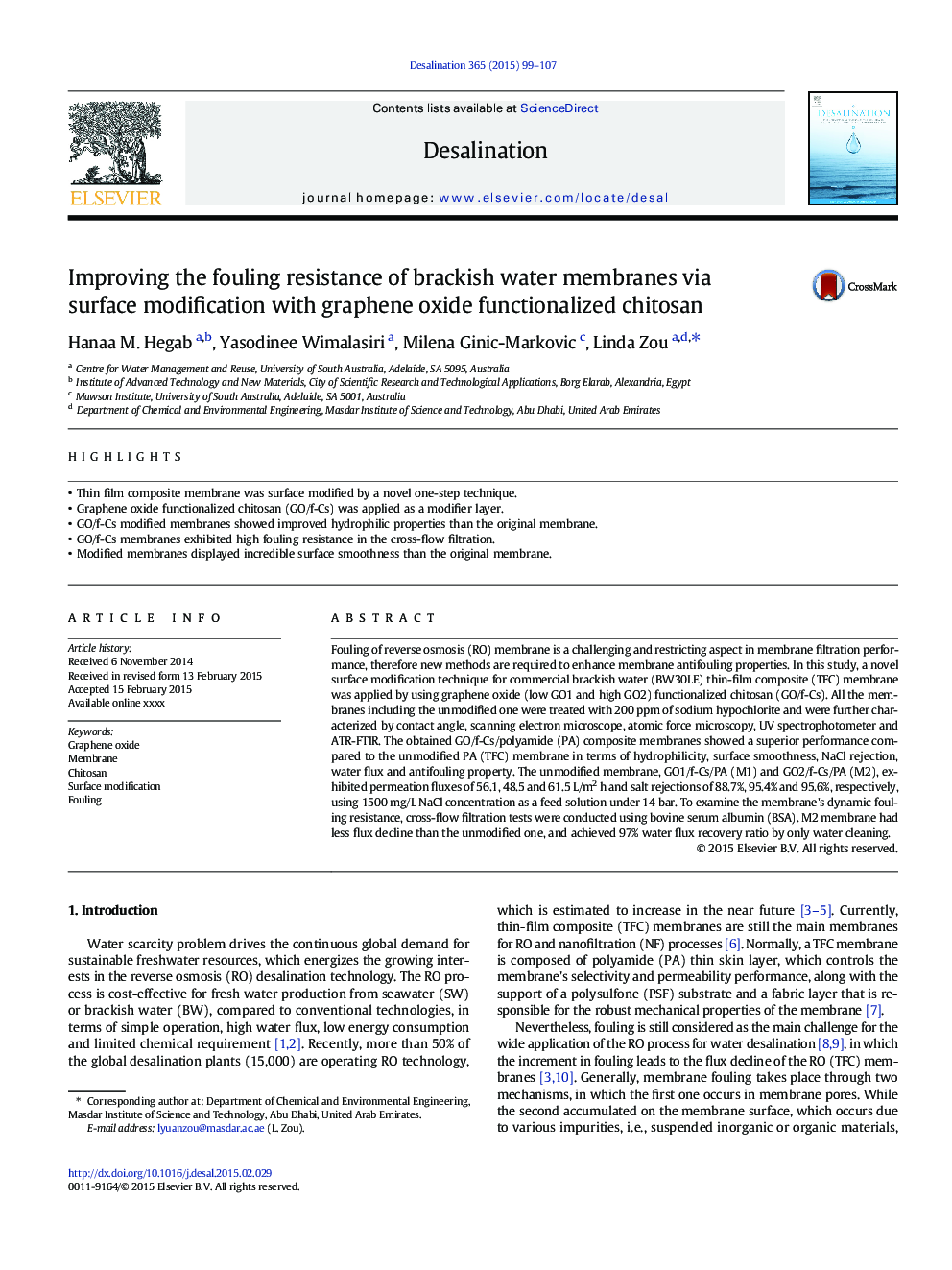| Article ID | Journal | Published Year | Pages | File Type |
|---|---|---|---|---|
| 7008318 | Desalination | 2015 | 9 Pages |
Abstract
Fouling of reverse osmosis (RO) membrane is a challenging and restricting aspect in membrane filtration performance, therefore new methods are required to enhance membrane antifouling properties. In this study, a novel surface modification technique for commercial brackish water (BW30LE) thin-film composite (TFC) membrane was applied by using graphene oxide (low GO1 and high GO2) functionalized chitosan (GO/f-Cs). All the membranes including the unmodified one were treated with 200Â ppm of sodium hypochlorite and were further characterized by contact angle, scanning electron microscope, atomic force microscopy, UV spectrophotometer and ATR-FTIR. The obtained GO/f-Cs/polyamide (PA) composite membranes showed a superior performance compared to the unmodified PA (TFC) membrane in terms of hydrophilicity, surface smoothness, NaCl rejection, water flux and antifouling property. The unmodified membrane, GO1/f-Cs/PA (M1) and GO2/f-Cs/PA (M2), exhibited permeation fluxes of 56.1, 48.5 and 61.5Â L/m2Â h and salt rejections of 88.7%, 95.4% and 95.6%, respectively, using 1500Â mg/L NaCl concentration as a feed solution under 14Â bar. To examine the membrane's dynamic fouling resistance, cross-flow filtration tests were conducted using bovine serum albumin (BSA). M2 membrane had less flux decline than the unmodified one, and achieved 97% water flux recovery ratio by only water cleaning.
Related Topics
Physical Sciences and Engineering
Chemical Engineering
Filtration and Separation
Authors
Hanaa M. Hegab, Yasodinee Wimalasiri, Milena Ginic-Markovic, Linda Zou,
